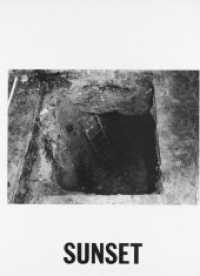- ホーム
- > 洋書
- > 英文書
- > Science / Mathematics
Full Description
The word "robot" does not originate from a science or engineering vocabulary. It was rst used in the Czech drama R.U.R. (Rossum's Universal Robots) written by Karel Capek and was rst played in Prague in 1921 (the word itself was invented by his brother Josef). In the drama the "robot" is an arti cial human being which is a brilliant worker, deprived of all unnecessary qualities: feelings, creativity and capacity for feeling pain. In the prologue of the drama the following "de nition" of robots is given: Robots are not people (Roboti nejsou lide). They are mecha- cally more perfect than we are, they have an astounding intellectual capacity, but they have no soul. The creation of an engineer is technically more re ned than the product of nature. The textbook "Robotics" evolved through more than 10 years of teaching robotics at the Faculty of Electrical Engineering, of the University of Ljubljana, Slovenia. The way of presenting the rather demanding subject was successfully tested with several generations of undergraduatestudents.
Contents
Homogenous transformation matrices.- Geometric description of the robot mechanism.- Two-segment robot manipulator.- Robot sensors.- Trajectory planning.- Robot control.- Robot environment.- Standards and safety in robotics.







